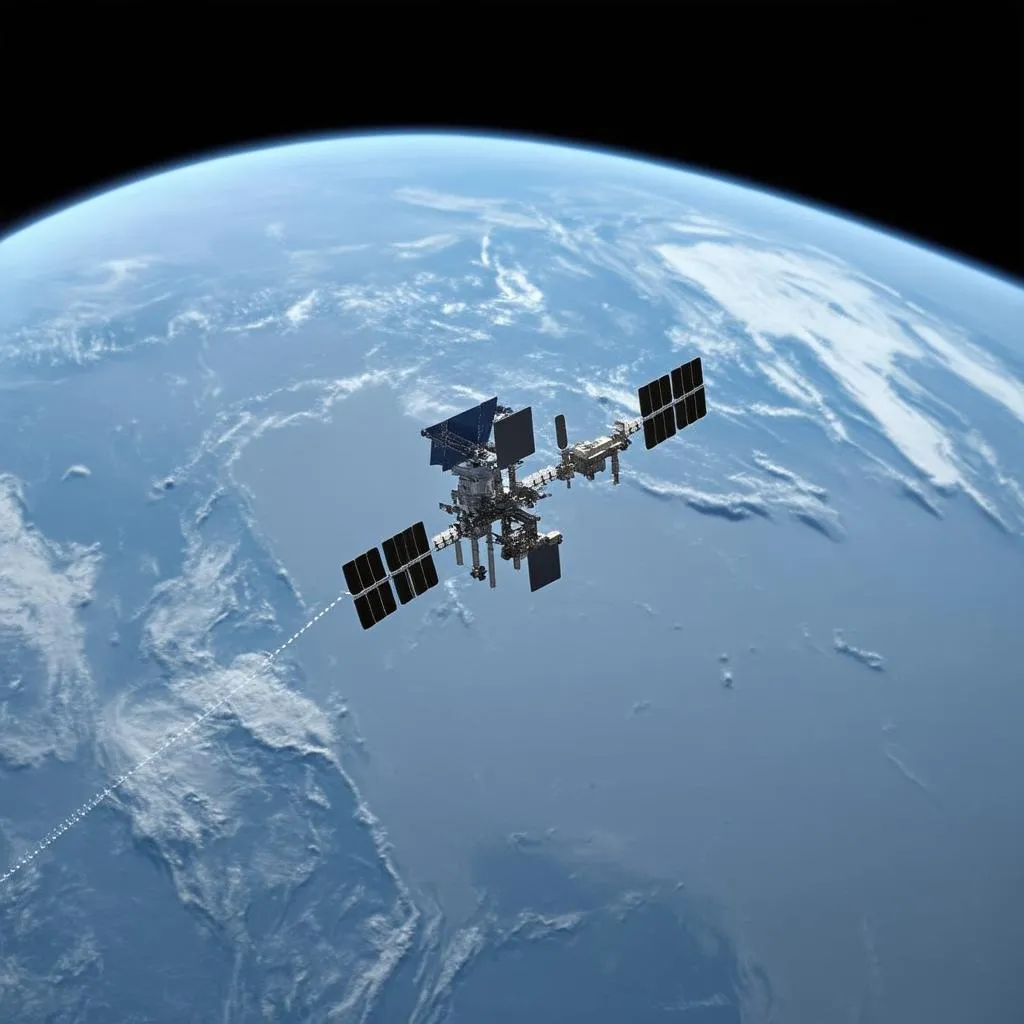Have you ever looked up at the night sky and spotted a string of lights moving in unison? Chances are, you were witnessing the Starlink satellite constellation in action. This ambitious project by SpaceX aims to provide high-speed internet access to even the most remote corners of the globe, from the bustling streets of Tokyo to the serene landscapes of Iceland. But have you ever wondered just how fast these satellites need to travel to stay in orbit and beam data back to Earth? Let’s find out!
Orbiting Earth at Incredible Speeds
Starlink satellites orbit our planet at an altitude of approximately 550 kilometers (342 miles), significantly closer than traditional geostationary satellites. This lower orbit allows for faster data transmission speeds with less latency. To stay in this orbit and avoid being pulled back down to Earth by gravity, the satellites need to move at a staggering speed of 27,000 kilometers per hour (17,000 miles per hour)!
To put that into perspective, that’s about:
- 7.5 kilometers per second (4.6 miles per second)!
- Orbiting the Earth once every 90 minutes!
- Travelling from New York City to Los Angeles in just under 8 minutes!
 Starlink satellite orbiting Earth
Starlink satellite orbiting Earth
Why So Fast?
The speed of a Starlink satellite is crucial for maintaining its orbit. The closer an object is to Earth, the stronger the gravitational pull it experiences. To counteract this force and avoid crashing back down, Starlink satellites need to maintain a high orbital velocity. This delicate balance between gravity and speed is what keeps them in the sky.
The Starlink Constellation: A Coordinated Dance
With thousands of satellites already launched and many more planned, the Starlink constellation resembles a carefully choreographed dance across the night sky. Each satellite follows a specific path, communicating with both ground stations and other satellites in the network to provide seamless internet coverage.
Frequently Asked Questions
Q: Can Starlink satellites collide with each other?
While the possibility exists, SpaceX has implemented sophisticated collision avoidance systems to minimize the risk. These systems constantly monitor the positions of the satellites and make slight adjustments to their trajectories when necessary.
Q: Can I see Starlink satellites with the naked eye?
Yes, especially shortly after launch, when they appear as a string of bright lights moving across the sky. There are websites and apps available that can help you track the satellites and predict their visibility in your area.
 Starlink satellites visible as a streak across a starry night sky
Starlink satellites visible as a streak across a starry night sky
Starlink and Travel: Staying Connected on the Go
Imagine trekking through the Himalayas or sailing across the Pacific, all while staying connected with loved ones and accessing information online. Starlink has the potential to revolutionize travel, particularly in remote areas where internet access is limited.
Travel Tip: For those venturing off the beaten path, keep an eye out for updates on Starlink’s global coverage. The ability to stay connected no matter where you roam could be a game-changer for adventure-seekers and digital nomads alike.
Conclusion
The speed of a Starlink satellite is a testament to the incredible advancements in space technology. These high-speed marvels are not just bringing internet access to remote areas but also transforming the way we connect with our world.
For more information on Starlink and its impact on travel, be sure to check out the latest articles and resources on travelcar.edu.vn. Happy travels, and keep looking up!